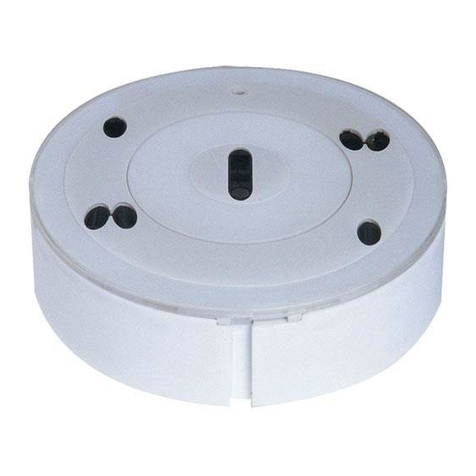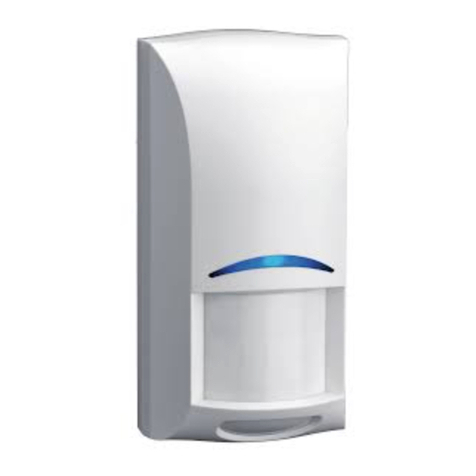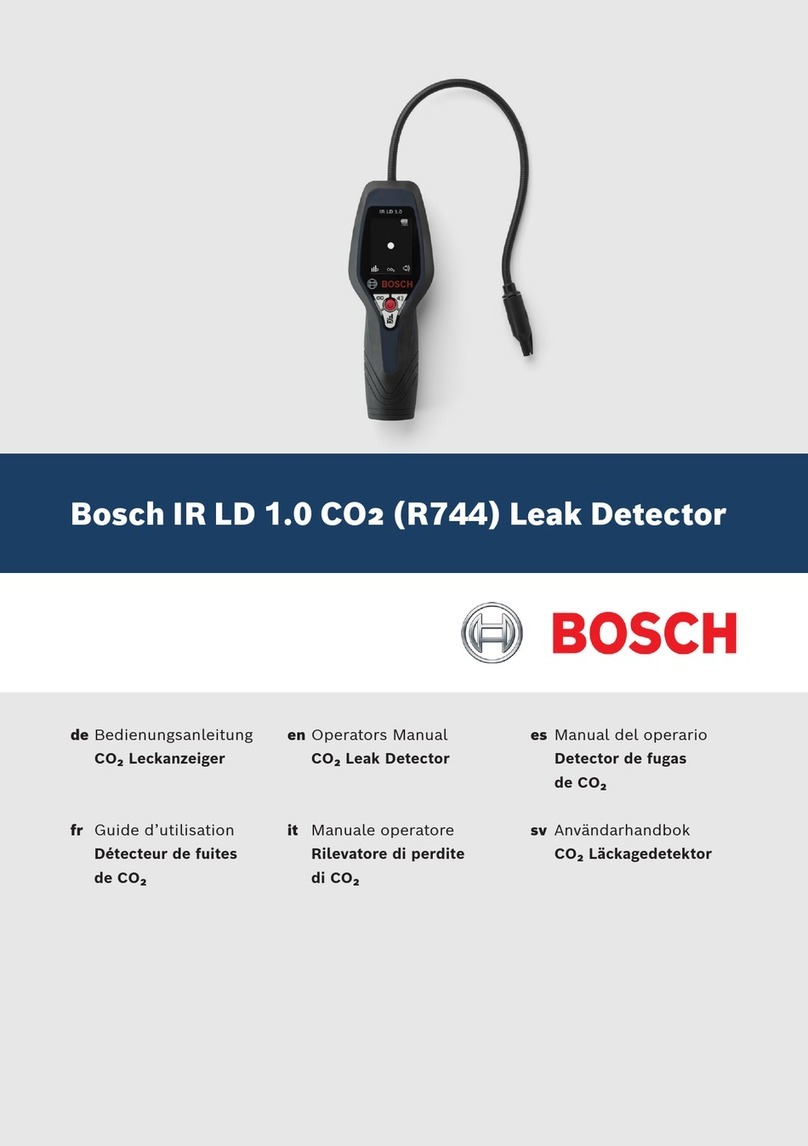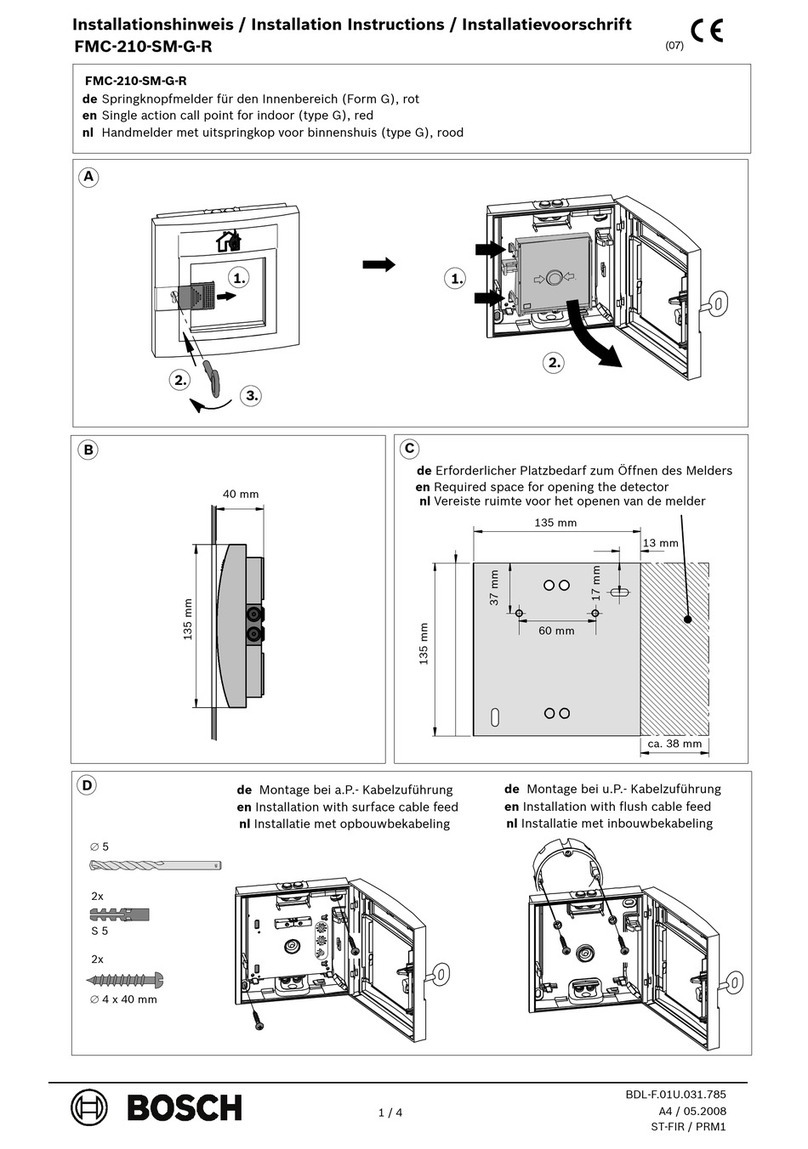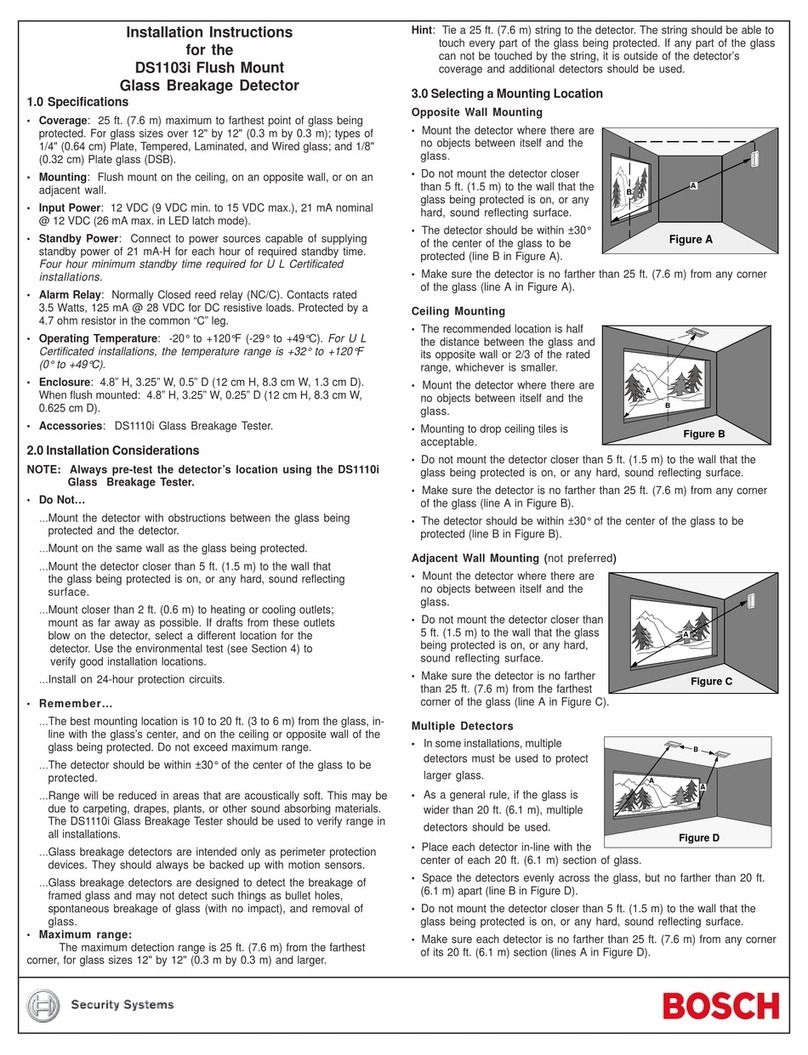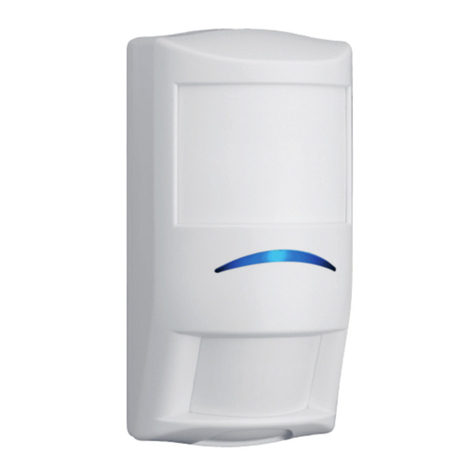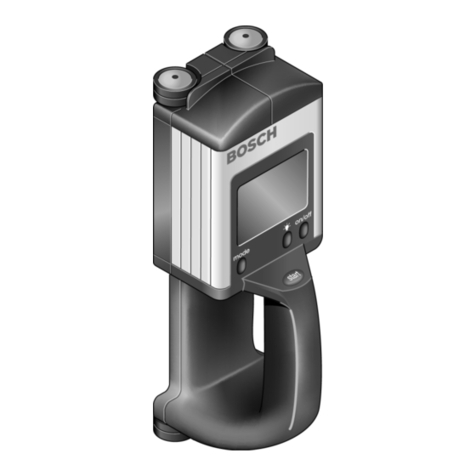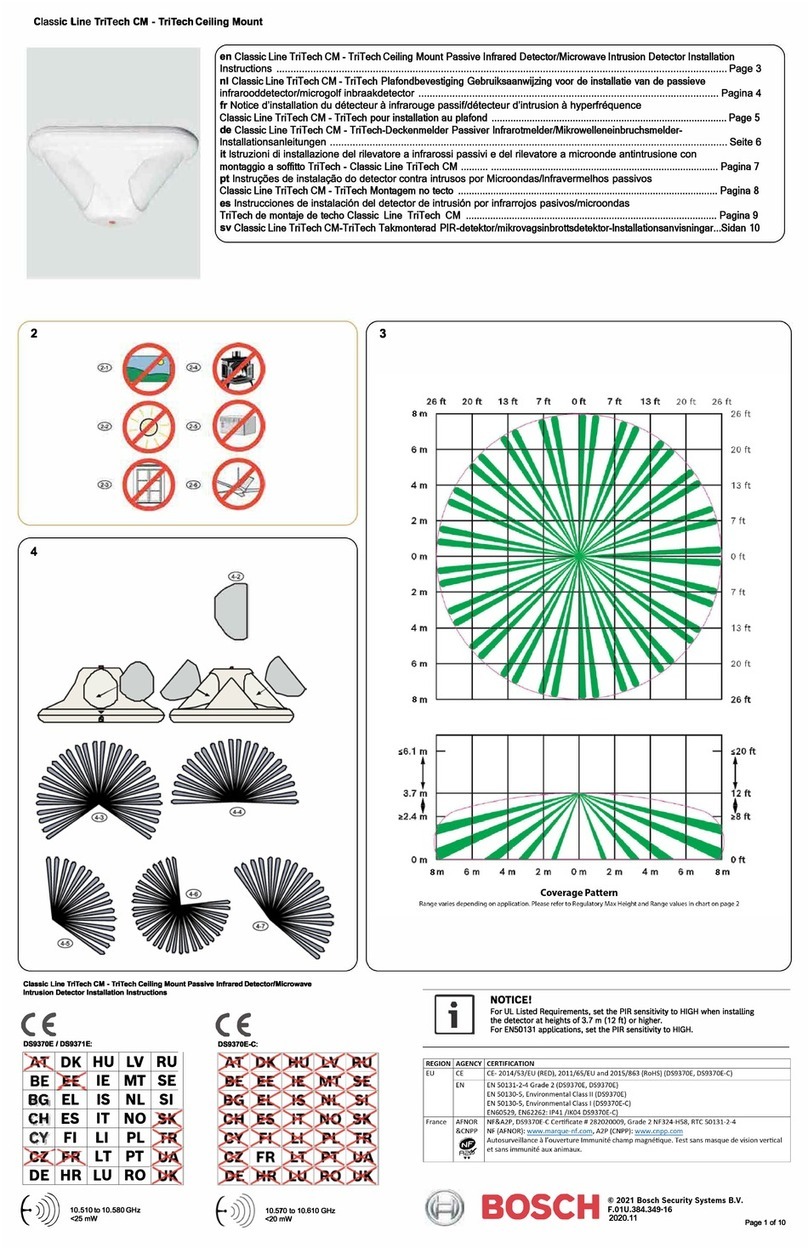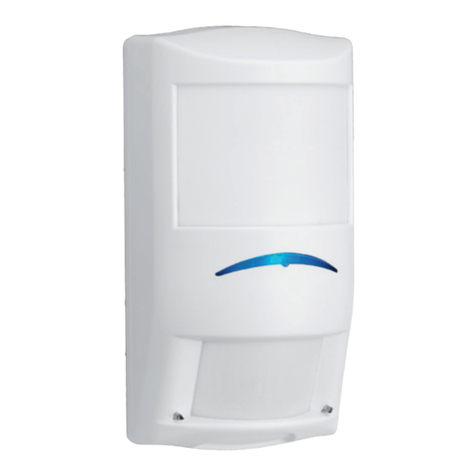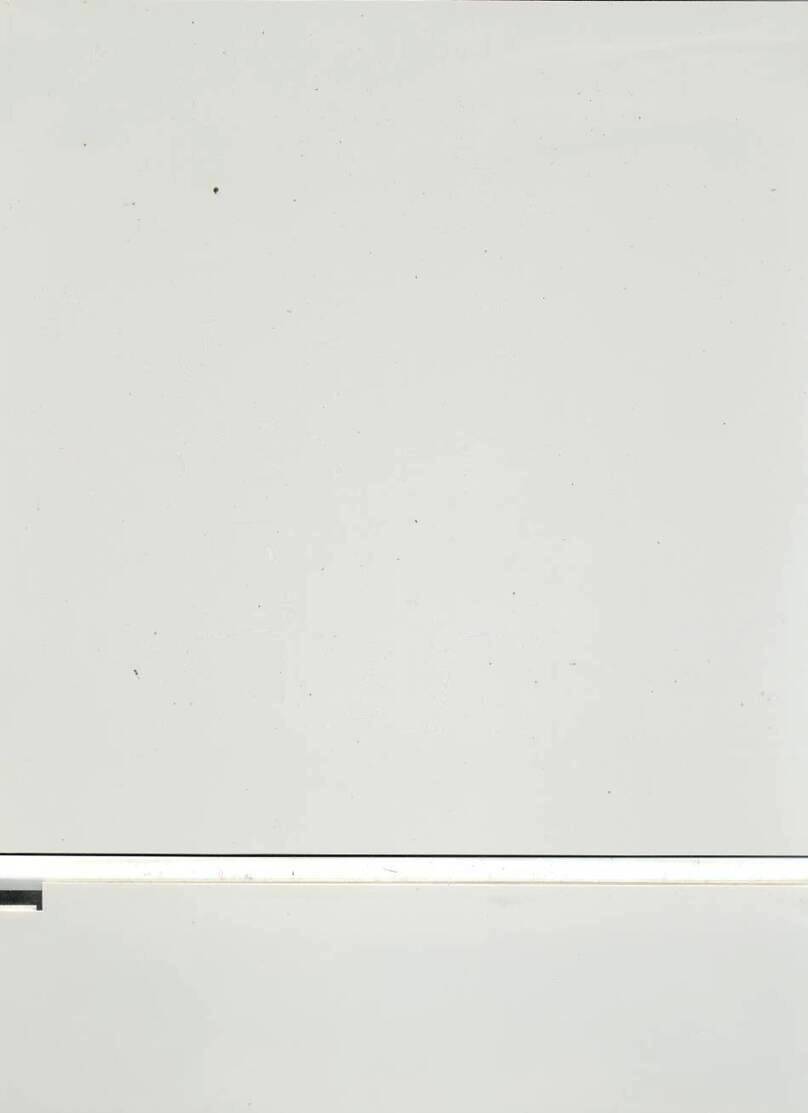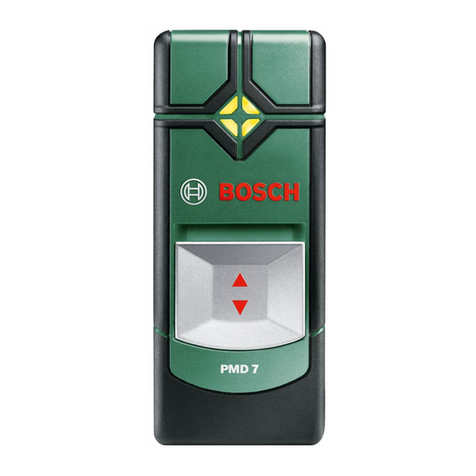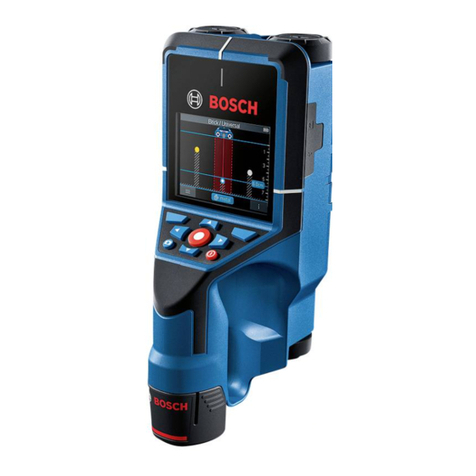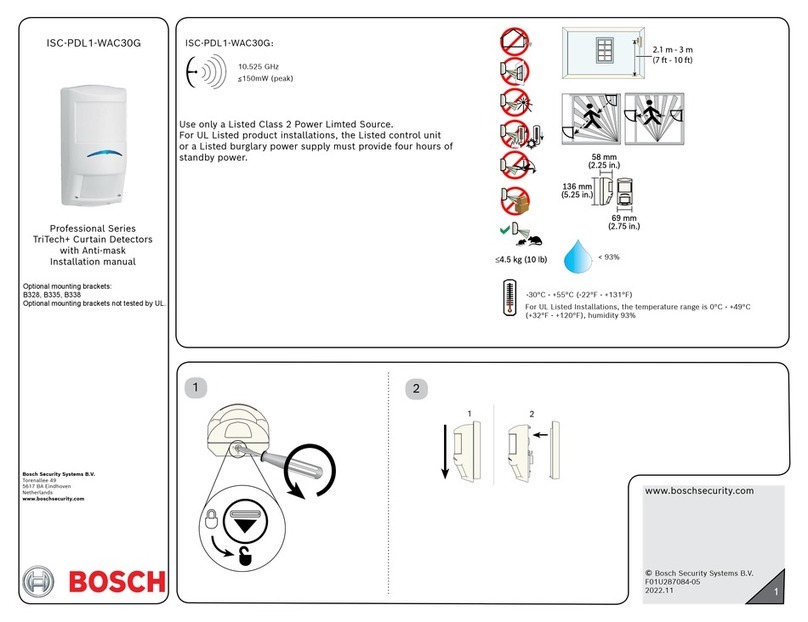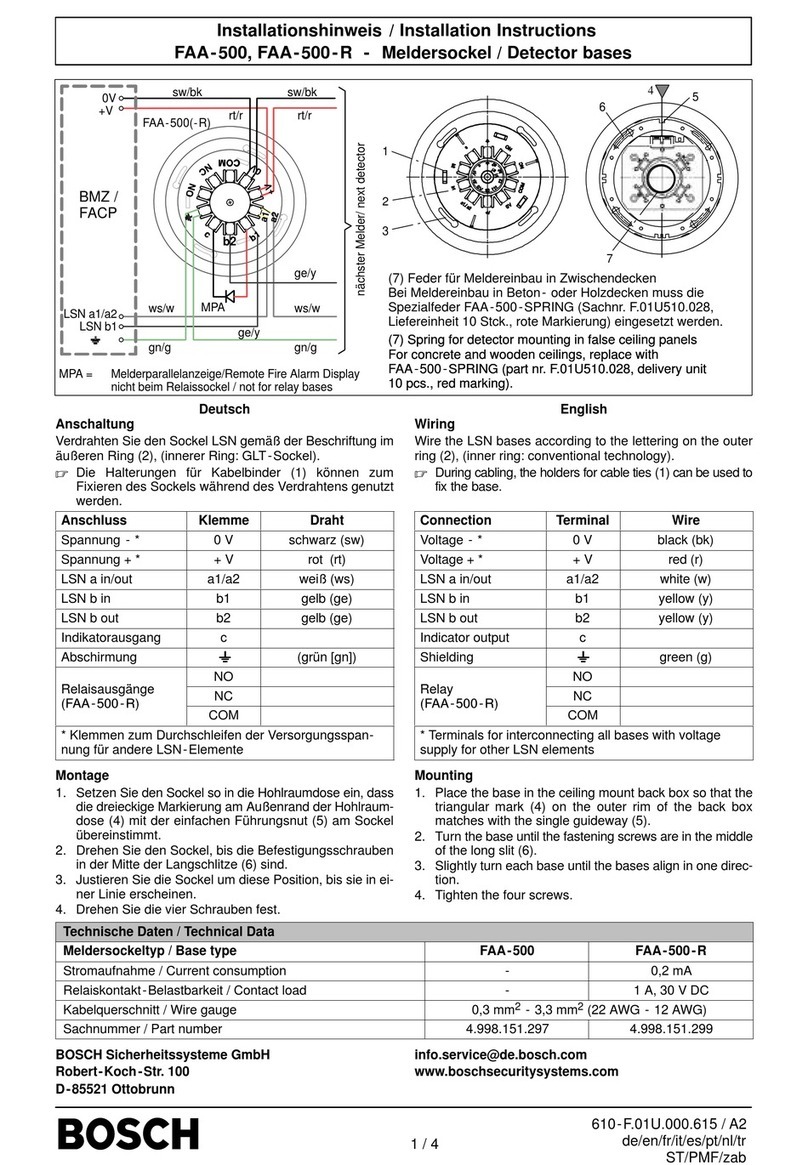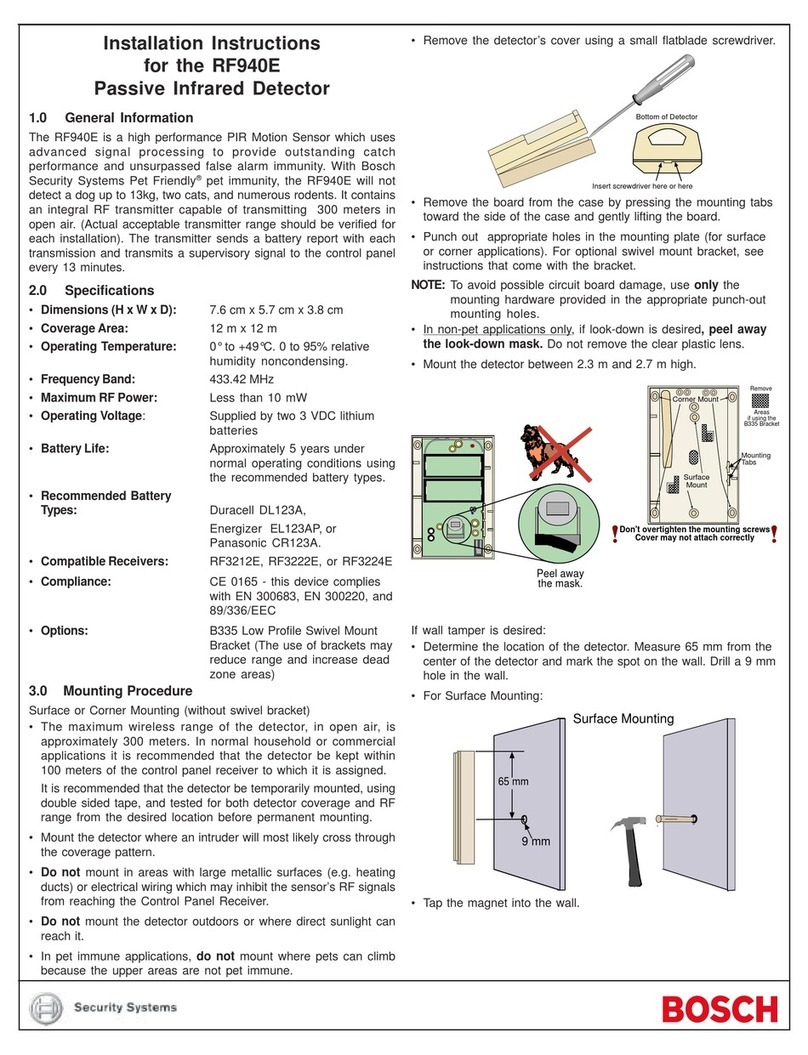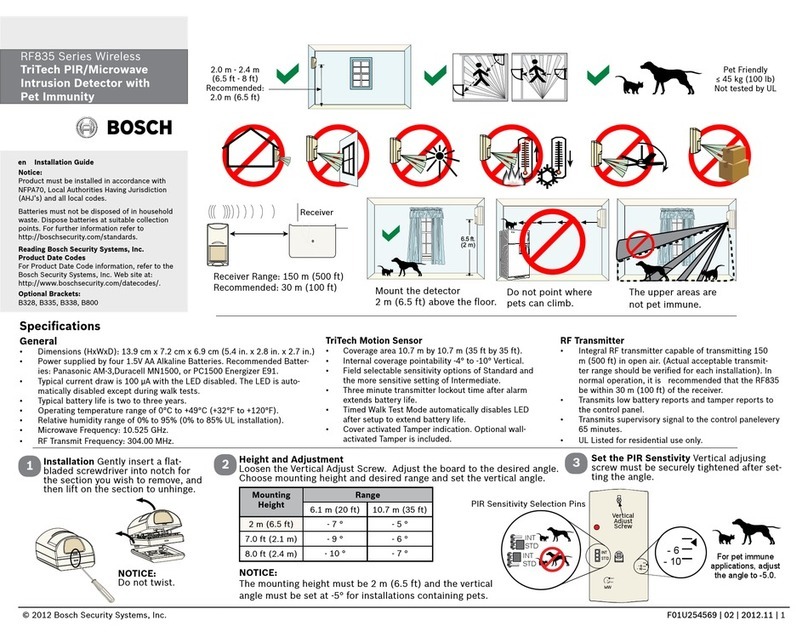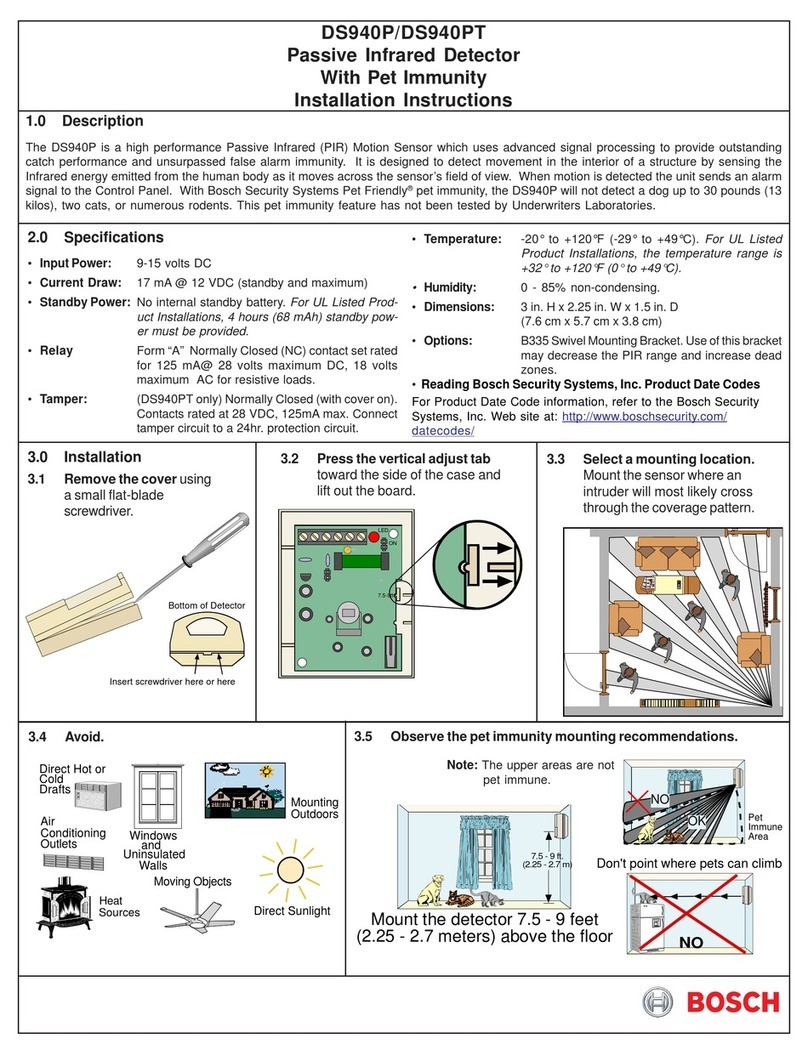
Bosch Security Systems Inc
www.boschsecurity.com.cn
9
Installation hole
Back cover
Pole
(9-1)
(9-2)
(9-3)
OUTLINE
DIMENSION
10
After completion of the installation, confirm correct operation by suitable
walk test. Refer to the following LED indications during the walk test.
Confirm tamper operation prior to replacing covers. Confirm system
operation with covers replaced.
CONFIRMATION OF OPERATION
Transmitter
Receiver
Conditions
Transmitting
Watching
Alarm
Indication
Power indicator is on (Green LED)
Good&Level indicator is on (Green LED&Red LED)
Alarm indicator is on (Red LED)
NOTE: Conduct a Walk Test at least once a year
11 TROUBLE SHOOTING GUIDE
Possible cause A Remedy
Indication lamp of Transmitter
does not light. Improper voltage of power supply Check power supply and wiring
Power supply indication Lamp
of Receiver does not light. Improper voltage of power supply Check power supply and wiring
Alarm indication lamp does not
light even when the beams are
intercepted.
Remove the reflecting object or change the place
for installation and the optical axis direction.
Check three beams to intercept at the same time.
Adjust obscuration time setting to be shorter.
Melted bridge on the signal connection
Check the wiring.
It needs to be repaired.
Alarm LED on the Receiver
does not turn off.
Inadequate optical axis.
Shading objects between the Transmitter and
the Receiver.
Readjust the optical axis.
Remove the shading objects.
Clean optics with soft cloth.
Bad wiring connection.
Change of supply voltage.
Shading objects moving by wind between the
Transitter and the Receiver.
Unstable installation of the sensor unit.
Incomplete optical axis adjustment.
Birds and other large flying objects intercept the
beam.
Check the wiring connection.
Check the voltage (for stabilized supply voltage.)
Remove the shading objects or change the place
for installation.
Fix steadily.
Readjust the optical axis.
Readjust the obscuration time to be longer or
reposition.
Infrared beam from Transmitter is reflected on
another object and sent into the Receiver.
Shorter obscuration time than that set on the
obscuration control.
Q Symptom
Intermittent alarm.
Although alarm LED lights
intercepted, alarm does
when the beams are
not ring.
Three beams are not intercepted at the same time.
Broken wires or short on the signal wires.
(Wrong current on the signal wires)
Dirty cover or dirty reflection mirror of the
Transmitter and/or Receiver.
8
(8-1)
(8-2)
(8-3)
(8-4)
(8-5)
ADJUSTMENT OF OBSCURATION
Caution: Obscuration time settings exceeding 70msec (exceeding a setting of 1)
do not comply with the requirements in
UL639. Instrusion Detection Units.
Set the obscuration time of the receiver by adjusting the obscuration time
control to the required setting according to the sketch (8-1). The obscuration
time should be set lower to detect faster moving targets, however care should
be taken to note the environmental conditions as the obscuration time should
be set higher to ignore conditions where there are a lot of birds or wind
blown material.
Obscuration time control
fast running at full speed (6.9m/s)
walking with quick steps (1.2m/s)
normal walking (0.7m/s)
slow action (0.3 0.5m/s)
7
Vertical adjustment
(7-5)
to raise(loosen)(7-6)
to lower(tighten)(7-7)
Monitor Jack
(7-9)
(7-2)
Look through the viewfinder(7-3) as shown below.
ADJUSTMENT OF OPTICAL AXIS
(7-1)
Turn on the power supply after uninstallation.
(7-8)
Adjust the angle of the lens via the Horizontal angle adjustment and
the Vertical adjustment(7-5) screw so that the sensor can be seen in
the center of the Viewfinder.This adjustment is carried out on both
the Transmitter and Receiver. Confirm after adjustment that the
green GOOD LED is on, otherwise alignment should be readjusted.
The red LEVEL LED lamp will be brighter dependent on higher signal
levels.
It is important to ensure correct optical alignment
between the transmitter and receiver for proper
operation.
(7-4) Place the viewfinder(7-3) on either right or left hand side of the lens
whichever makes easier viewing.
NOTE:After completion of optical adjustment, ensure that both filters on the
receiver are replaced t o their original position behind t he mirrors.
(7-11)
Insert the meter pins into the monitor jack(7-9). (Pay attention to the
polarity because of DC voltage)
(7-10)
The best adjustment of optical axis can be done by reading the output
voltage of the monitor jack.
NOTE: If the sensors are too close together then the signal level saturates
and the IR beam may be shut-down. This is normal and will only be
achieved during bench testing. Signal levels are restored u nder
normal operation distances.
(7-12)
a) Adjust the horizontal adjustment until the output is at a maximum.
b) Adjust the vertical adjustment screw to obtain best signal.
(Do not interrupt beam by hands during the adjustment)
(7-13)
The following minimum voltages should be obtained to ensure best
performance.2.3V for all of the SBM series. If this is not obtained
then the transmitter and receiver should be re-aligned.
How to use the Monitor Jack?
Page 4 of 6
Bosch Security Systems Inc
www.boschsecurity.com.cn
2
(2-15) GOOD(Green)
Transmitter LED
(2-1)
(2-2)
(2-3)
(2-4)
(2-5)
(2-6)
(2-7)
COVER
MAIN BODY
Cover lock screw
Viewfinder
Horizontal angle
adjustment dial
Obscuratin time
adjustment
(Only for Receiver)
Monitor jack
(Only for Receiver)
(2-12)
(2-13)
Vertical adjustment
screw
LENS
(2-14) Receiver LED
(2-8)
(2-9)
(2-10)
(2-11)
·À²ð¿ª¹Ø
Wire hole
Connection terminal
LED
Tamper
On when optically aligned
Off when optically not
aligned
(2-16) LEVEL(Red)
Intensity varies with signal
(2-17) ALARM
Alarm indication lamp
(2-18)
(2-19) POWER(Green)
Monitor jack: Should be
used for making the
optimum optical axis
adjustment
Obscuration time
adjustment:To be
used for setting the
obscuration time
( Refer to ' adjustment
of obscuration time ' )
PARTS DESCRIPTION
1SPECIFICATION
(6-1)
(6-2)
(6-3)
(6-5)
6
(6-6)
(6-7)
(6-8)
(6-9)
(6-10)
(6-11)
(6-13)
(6-14)
(6-15)
(6-16)
Wiring distance
(6-19)
(6-20)
38mm~ 50mm
(6-21)
(6-22)
(6-23)
(6-24) Take off pole cover(6-23)
(6-25)
(6-26)
INSTALLATION
WALL MOUNT
Loosen screw holding cover and remove the cover.
Break knock-out (6-4) and pull wire through.
Attach the unit to the wall.
Connect wires to the terminal.
Attach the mounting pattern paper to the wall, mark
the installation holes, and make guide holes.
Make the optimum optical adjustment as per section 7
and confirm system operation before replacing covers.
Transmitter Terminal Configuration
Free
Power
Alarm
Free
Power
Free
Receiver Terminal Configuration
POLE MOUNT
Each bracket to be reversely attached.
Pole mount back-to-back
Attach the bracket(6-21) to the pole
with the pole holder.
Pull the wire through the wire(6-18)
hole of the pole.
Bracket
Pole holder
Pole cover
3
(3-1)
(3-2)
(3-3)
(3-4)
(3-6) Receiver
(3-7) Transmitter
(3-8) Receiver
(3-9) Transmitter
(3-11)
Receiver
(3-12)
Transmitter
(3-13)
Transmitter
(3-14)
Receiver
SUGGESTIONS FOR
INSTALLATION
Ensure the sensors line of sight is free from any false
alarm sources such as bushes, trees,etc.
(Pay attention to these as they may change seasonally.)
Ensure the sensors are mounted on a stable and firm
fixing.
Ensure strong sunlight or car headlights do not shine
directly on to the receiver. (Within 2 from the optical
axis is not recommended.)
In case of jump phenomenon, as shown section(3-5),
change the disposition of transmitter and receiver to the
following m anner s hown s ection(3-10).
DS432i-CHI
DS433i-CHI
DS435i-CHI
75m
150m 4.5m
2.25m
100m 3.0m
Spread of
Beam
Model Protection
Distance
Protection
Distance
Spread of
Beam
Height of
installation
0.7~1.0m
4
(4-1)
(4-2)
(4-3)
5
Height of installation and protection distance
Note that here the protection distances
refers to the sheet below.
DIRECTION OF INSTALLATION
Because angle of reflection
mirror is adjustable in 90
horizontally and 8
vertically, the unit can be
installed in various directions.
(5-1)
(5-2)
Vertically16
(8)
Horizontally 180
(90)
Protection range
Infrared beam
Detection system
Light source
Response time
Power required
Power
consumption
Temperature range
Tamper output
Optical axis horizontal adjust
Optical axis vertical adjust
Collimator
Measure for moisture/frost
Other additional function
Weight
3 beams
3 beams simultaneous cut-off detection
Infrared LED
Relay contact, form 'C' contact rating
30V AC, DC 0.5A Max.
Switch contact, B-Contact
30V DC, 0.5 A Max.
Finder ( peep window )
Slit type cover, heater option
Sensitivity monitoring output terminal.
Ok monitoring
1100g ( Transmitter and Receiver )
Outline dimension
Material
DS432i-CHI
50-75m 100-150m
450m225m
35~700 msec
DC 10.5V~28V
40mA 40mA
-25 ~+55
L270mm W90mm H90mm
Cover: PC Base: ABS
180 ( 90 )
16(8 )
75-100m
300m
40mA
DS433i-CHI DS435i-CHI
Model
Outdoor
Indoor
Alarm output
TRIPLE BEAM PHOTOELECTRIC DETECTOR
INSTALLATION INSTRUCTION
Page 3 of 6
( Refer to ' how to use
the monitor jack' )
DS432i-CHI
DS433i-CHI
DS435i-CHI
Receiver
Transmitter 40mA 60mA50mA
DS432i-CHI
24V 12V 24V
2411m
4219m
5625m
8438m
268m
938m
625m
469m
¦Õ
¦Õ
¦Õ
¦Õ
12V
2
0.3mm ( 0.6)
2
0.5mm ( 0.8)
2
0.75mm ( 1.0)
2
1.25mm ( 1.2)
1929m
3375m
4500m
6750m
214m
750m
500m
375m
DS433i-CHI DS435i-CHI
24V12V
1607m
2813m
3750m
5625m
179m
625m
417m
313m
Model
Voltage
Wire
diameter
(6-12)
Tamper
(6-17)
Tamper

